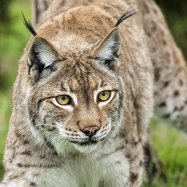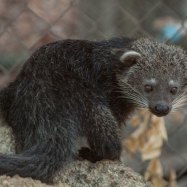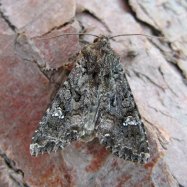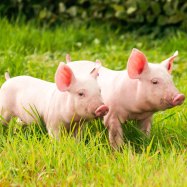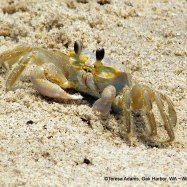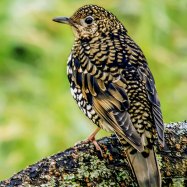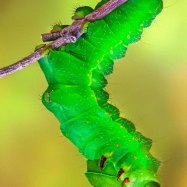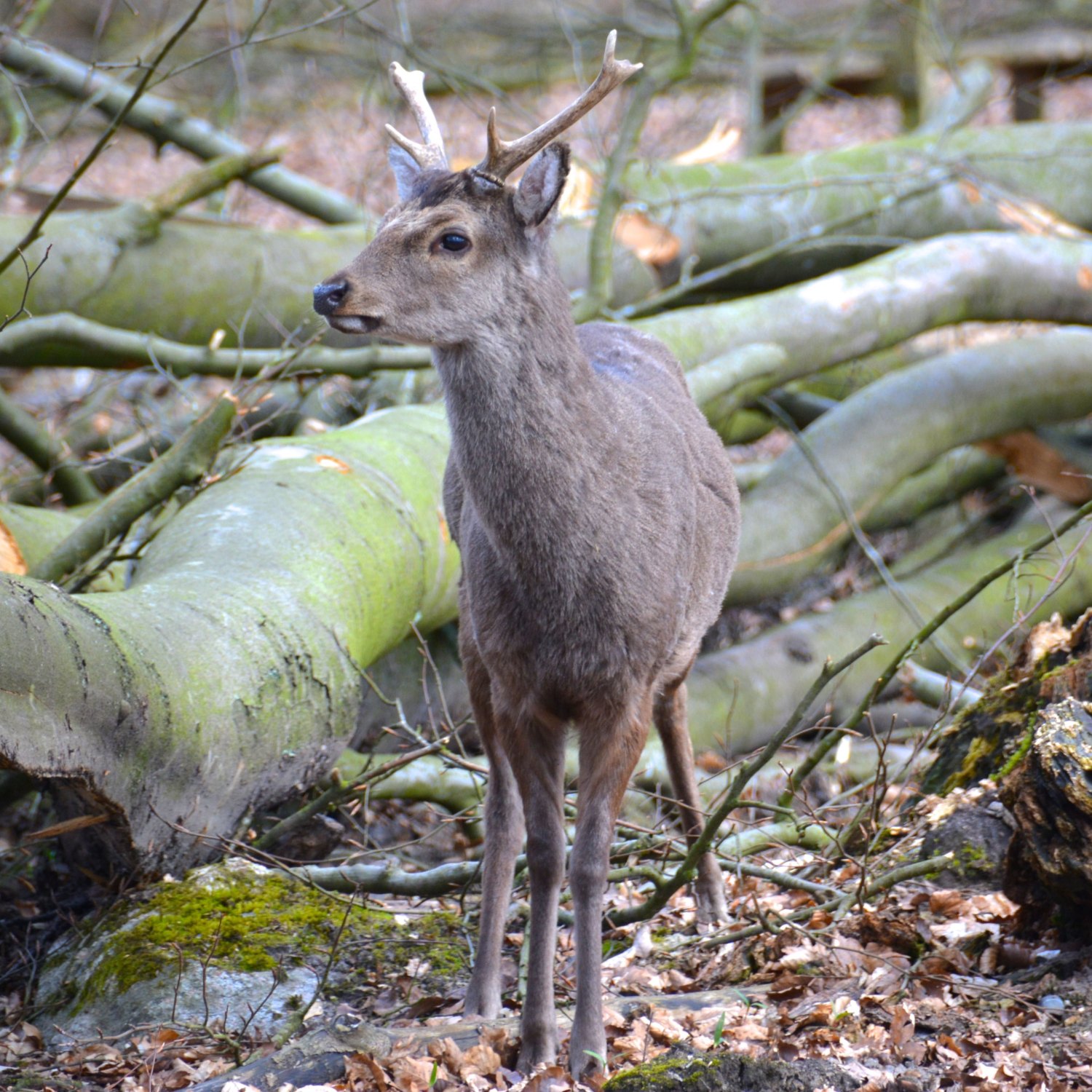
Sika Deer
1.4 - 1.8 meters (4.6 - 5.9 feet)
Sika deer, also known as spotted deer, are medium-sized animals with a compact body and slender legs. They can grow up to 1.8 meters long and are native to Japan, China, Korea, and parts of Russia. Belonging to the Cervidae family, these beautiful creatures add charm to their natural habitats with their unique spotted coat. #SikaDeer #SpottedDeer #MediumSize #Cervidae
Animal Details Summary:
Common Name: Sika Deer
Kingdom: Animalia
Habitat: Forests, grasslands, wetlands
The Endearing Beauty of Sika Deer: A Majestic Species from East Asia
The forests of East Asia are known for their lush greenery, diverse flora and fauna, and a thriving ecosystem. Among the many treasures found in this region, one stands out for its exquisite beauty and gentle nature - the Sika Deer, also known as Cervus nippon in the scientific world.With its distinctive reddish-brown coat and slender legs, the Sika Deer has captured the hearts of many nature enthusiasts around the world. In this article, we will delve into the fascinating world of this majestic species and explore its unique features, habitat, and behavior Sika Deer.
The Evolution of Sika Deer
Sika Deer belong to the Animalia kingdom, part of the Chordata phylum and Mammalia class. They are classified as Artiodactyla, meaning they are even-toed hoofed mammals, and are members of the Cervidae family, which includes deer, moose, and elk.The earliest known ancestor of Sika Deer dates back to the Pleistocene era, around 1.8 million years ago. These ancient ancestors were believed to have originated from northern China, and over time, they spread to other parts of East Asia.
A Geographical Marvel
Sika Deer are found mainly in East Asia, with their primary concentration in Japan. They can also be spotted in the neighboring countries of China and Korea, as well as parts of Russia. Their geographical distribution covers a wide range of habitats, from dense forests, grasslands, to wetlands.Interestingly, the name "sika" is derived from the Japanese word "shika," which translates to "deer Snowshoe." In Japan, Sika Deer hold a special place in the hearts of the locals and are often featured in their folklore and artwork.
A Unique Coat and Body Shape
One of the most striking features of Sika Deer is their variable coat color. While the majority of them have a reddish-brown coat, some can range from dark brown to black. This unique coloration helps them blend into their forest surroundings, making it easier to escape from predators.In terms of body shape, Sika Deer are considered medium-sized, with a compact body and slender legs. They typically measure anywhere between 1.4 to 1.8 meters (4.6 to 5.9 feet) in length, making them smaller than other deer species.
Unlike other deer, Sika Deer have a distinctive white patch on their hindquarters, which is another characteristic that sets them apart from their counterparts.
A Foraging Marvel
As herbivores, Sika Deer primarily feed on a variety of plants and vegetation, such as grass, leaves, and fruits. They have a unique digestive system that allows them to break down tough plant fibers, making them adept at surviving in their natural habitat.In East Asia, Sika Deer are known for their role in the ecosystem, as they play a crucial role in maintaining the balance of plant populations. By foraging on plants, they help prevent overgrowth, keeping the ecosystem in check.
A Blissful Habitat
Sika Deer prefer to live in dense forests, where they can find refuge in the trees and bushes. However, they can also be found in grasslands and wetlands, mainly during the breeding season or when searching for food.These deer have adapted to living in the hilly, mountainous regions of East Asia, where they can navigate through rough terrains with their agile bodies. They are known to be excellent jumpers and can easily leap over obstacles such as fallen trees or streams.
A Gentle Mannerism
Sika Deer are known for their gentle and quiet nature. They are typically solitary animals, except during the breeding season when they gather in small herds. Within these herds, there is a hierarchy, and dominant males are responsible for protecting the herd from potential threats.One of the most endearing behaviors of Sika Deer is their vocalization. They communicate with each other using a series of whistles, grunts, and barks, depending on the situation. For instance, when in danger, they will bark loudly to alert others in the herd and escape quickly.
A Species in Decline
Despite their significant role in the ecosystem and their captivating beauty, the population of Sika Deer is declining. This is mainly due to habitat loss caused by human activities such as deforestation, urbanization, and industrialization.In addition, they are also hunted for their meat, antlers, and skin, causing a decline in their numbers. Furthermore, with the introduction of new species by humans, such as wild boars, Sika Deer face competition for food and resources, further endangering their existence.
Conservation Efforts
To protect the Sika Deer and their habitat, several conservation efforts have been initiated in the countries where they are found. Governments have implemented measures to prevent habitat destruction and have also restricted hunting and poaching.There are also efforts to educate the public on the importance of preserving these deer species and the impact of their decline on the ecosystem. Non-profit organizations and wildlife reserves also play a crucial role in preserving and protecting Sika Deer.
An Endearing Species
In conclusion, Sika Deer are a captivating species with unique features and behaviors, making them an essential part of the ecosystem in East Asia. From their variable coat color to their melodic vocalizations, these deer have captured the hearts and minds of people around the world.As efforts continue to protect and preserve this majestic species, we hope that future generations will get to experience the beauty and grace of Sika Deer in their natural habitats. Let us all do our part in maintaining the delicate balance of our natural world and cherish the enduring beauty of these magnificent creatures.

Sika Deer
Animal Details Sika Deer - Scientific Name: Cervus nippon
- Category: Animals S
- Scientific Name: Cervus nippon
- Common Name: Sika Deer
- Kingdom: Animalia
- Phylum: Chordata
- Class: Mammalia
- Order: Artiodactyla
- Family: Cervidae
- Habitat: Forests, grasslands, wetlands
- Feeding Method: Herbivorous
- Geographical Distribution: East Asia
- Country of Origin: Japan
- Location: Sika deer can be found in Japan, China, Korea, and parts of Russia.
- Animal Coloration: Variable, ranging from reddish-brown to black
- Body Shape: Medium-sized, compact body with slender legs.
- Length: 1.4 - 1.8 meters (4.6 - 5.9 feet)
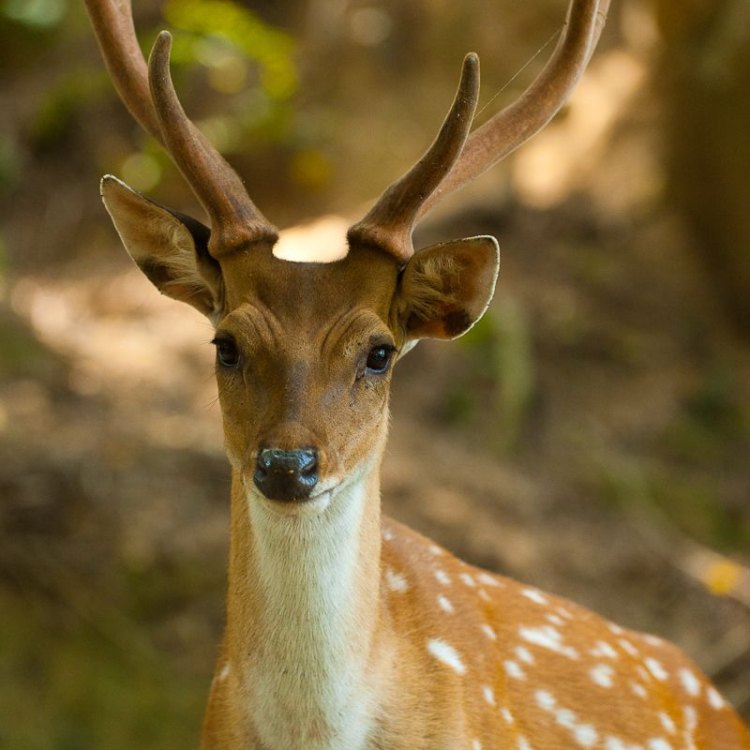
Sika Deer
- Adult Size: Medium-sized, weighing between 40 - 70 kg (88 - 154 lbs)
- Average Lifespan: 10 - 15 years in the wild, up to 25 years in captivity
- Reproduction: Sexual
- Reproductive Behavior: Mating occurs during the autumn rutting season, with males competing for females.
- Sound or Call: Males emit a distinctive high-pitched whistle during the rutting season.
- Migration Pattern: Some populations migrate, while others are sedentary depending on food availability and weather conditions.
- Social Groups: Sika deer live in small herds or family groups.
- Behavior: Sika deer are primarily active during dawn and dusk. They are known for their agility and ability to jump.
- Threats: Habitat loss, hunting, and competition with other deer species.
- Conservation Status: Least Concern
- Impact on Ecosystem: Sika deer play a role in seed dispersal and vegetation control.
- Human Use: Sika deer are hunted for their meat and antlers.
- Distinctive Features: Sika deer have a dark, shaggy mane on their neck and a white rump patch.
- Interesting Facts: Sika deer are known for their excellent swimming abilities and have been introduced to several countries for deer farming and hunting.
- Predator: Predators of sika deer include wolves, bears, and tigers.
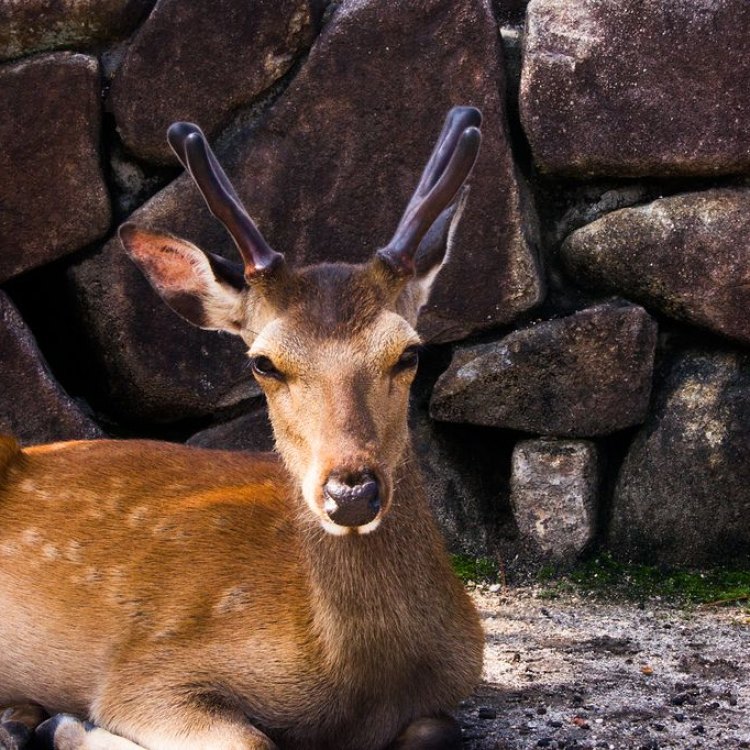
Cervus nippon
Sika Deer: The Graceful and Resilient Species
With its medium size, dark shaggy mane, and distinctive white rump patch, the sika deer is one of the most elegant and intriguing deer species in the world. This species, scientifically known as Cervus nippon, has a rich history and unique characteristics that make it stand out from other deer species. From its reproductive behavior to its migration patterns and impact on the ecosystem, sika deer have captured the attention of scientists, hunters, and nature enthusiasts alike. In this article, we will delve into the fascinating world of sika deer and explore what makes them such a unique and valuable species PeaceOfAnimals.Com.An Introduction to Sika Deer
Sika deer are medium-sized deer, weighing between 40 - 70 kg (88 - 154 lbs), making them smaller than other deer species such as moose and elk. They are native to East Asia, specifically Japan, Taiwan, and parts of China and Korea. However, due to their popularity and excellent adaptation skills, sika deer have been introduced to other countries such as the United Kingdom, United States, and New Zealand.One of the most striking features of sika deer is their dark, shaggy mane on their neck and a distinctive white patch on their rump, an essential characteristic for hunters to identify them from other deer species. They also have a reddish-brown coat during the summer, which turns into a dark brown or black color during the winter to blend in with the environment.
The Reproduction and Behavioral Patterns of Sika Deer
Sika deer have a sexual mode of reproduction, with males competing for females during the autumn rutting season. It is during this time that sika deer males emit a distinctive high-pitched whistle, often heard from miles away. This sound serves as a way for males to announce their presence and attract females for mating.During the rutting season, males also display their dominance by engaging in physical fights with other males, using their antlers as weapons Sea Squirt. Once a male secures a female, they pair up and stay together until the female gives birth.
Sika deer are social animals and live in small herds or family groups. These groups consist of one male, several females, and their offspring. They maintain a hierarchy within the herd, with the alpha male having the highest social status and access to the best food sources.
The Migration and Behavior of Sika Deer
The migration pattern of sika deer is closely linked to food availability and weather conditions. Some populations migrate to different areas, while others are sedentary, residing in the same area throughout the year. In Japan, sika deer migrate to higher elevations during the summer and come down to lower elevations during the winter to avoid harsh weather conditions.Sika deer are primarily active during dawn and dusk, making them crepuscular animals. They are also known for their agility and ability to jump, with the ability to jump over six feet high from a standstill. Therefore, it is no surprise that their name "sika" translates to "lovely jump" in Japanese.
Threats to Sika Deer and Their Conservation Status
Sika deer face various threats in their natural habitat, including habitat loss, hunting, and competition with other deer species. Habitat loss is one of the main challenges facing sika deer, with human development resulting in the fragmentation and destruction of their habitats. This not only affects sika deer but also has an impact on other species that rely on sika deer for food and shelter.Hunting is another significant threat to sika deer, with the demand for their meat and antlers driving their population decline. In some areas, sika deer are also considered a pest and are hunted to reduce their impact on agriculture.
Despite these threats, sika deer have been classified as "Least Concern" on the IUCN Red List of Threatened Species, meaning they are not currently at risk of extinction. However, it is essential to continue monitoring their population and addressing the threats they face to ensure their survival in the future.
The Impact of Sika Deer on the Ecosystem
As a herbivorous species, sika deer play a crucial role in seed dispersal and vegetation control. Their grazing habits help maintain a balanced ecosystem, preventing the overgrowth of vegetation in certain areas. The white rump patch of sika deer also serves as a warning signal to other animals, alerting them of nearby predators.However, as with any animal, an increase in the sika deer population can have negative impacts on the ecosystem, leading to habitat destruction and competition for resources. This is why it is crucial to manage their population and protect their natural habitats.
Human Use of Sika Deer
Sika deer have been an important source of food and materials for humans for centuries. Their meat is considered a delicacy in many countries, and their antlers are used for various purposes such as traditional medicine and decoration.In recent years, sika deer have also been introduced to several countries for deer farming and hunting. Deer farming is the practice of breeding sika deer in captivity for their meat and antlers, while hunting involves pursuing and killing sika deer for sport. These practices have sparked debates about animal welfare and the impact on the environment, with concerns about overhunting and taming wild animals.
Interesting Facts about Sika Deer
Sika deer are full of surprises and have many fascinating characteristics and behaviors. Here are some interesting facts about this graceful species:- Sika deer are excellent swimmers and have been known to swim several miles to reach new territories or escape predators.
- Due to their adaptability, sika deer have been introduced to over 85 countries worldwide.
- In Japan, sika deer are considered sacred animals, with many temples and shrines dedicated to their protection.
- Sika deer are the only deer species to have four distinct vocalizations for different situations – barking, whistling, grunting, and rutting calls.
- In some areas, sika deer can interbreed with other deer species, producing hybrid offspring known as "sika-wapiti."
Predators of Sika Deer
Sika deer are preyed upon by various predators, including wolves, bears, and tigers. In areas where these predators are present, sika deer have evolved to display heightened vigilance and agility to escape their attacks.In Conclusion
Sika deer are an intriguing and resilient species, known for their elegance, adaptability, and unique characteristics. With a lifespan of 10-15 years in the wild and up to 25 years in captivity, these deer have a lot to offer for animal lovers and researchers.As with any animal, it is essential to protect and monitor the sika deer population to ensure their survival and maintain a balanced ecosystem. Through conservation efforts and responsible management of hunting and farming practices, we can continue to admire and learn from this beautiful species for generations to come.
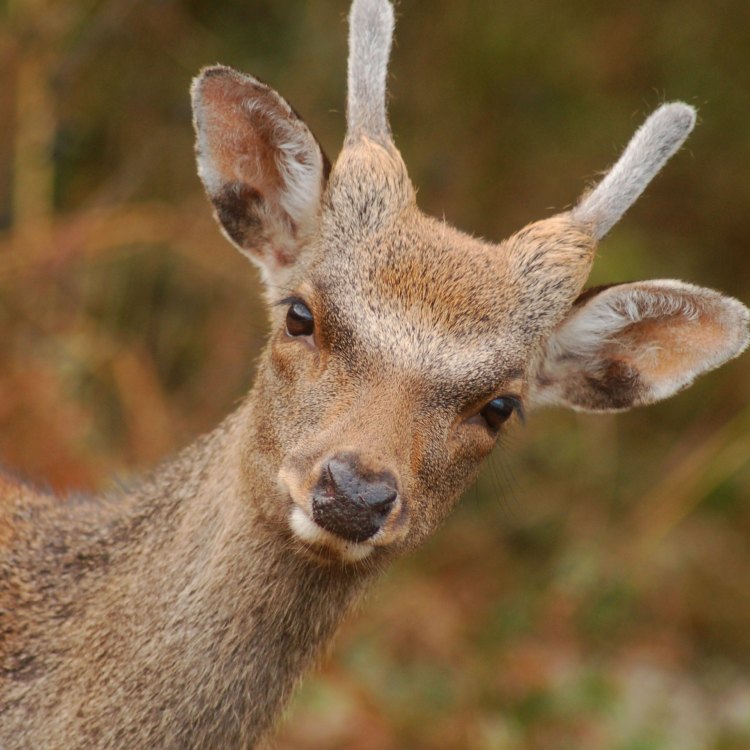
The Endearing Beauty of Sika Deer: A Majestic Species from East Asia
Disclaimer: The content provided is for informational purposes only. We cannot guarantee the accuracy of the information on this page 100%. All information provided here may change without prior notice.


